Xinchen Ye
Unleash the Power of Local Representations for Few-Shot Classification
Jul 02, 2024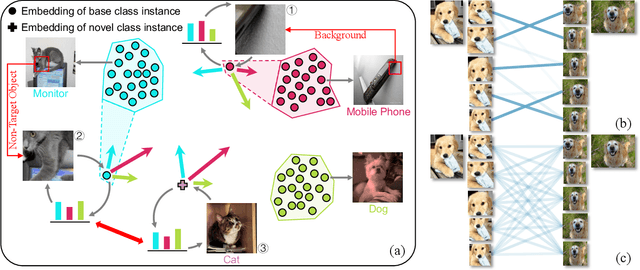
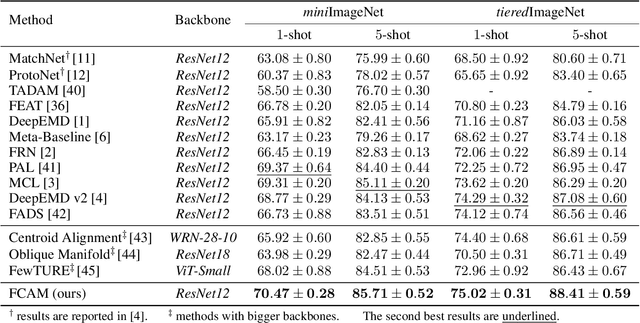
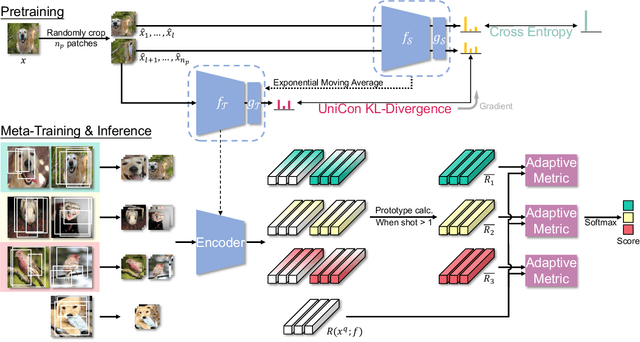
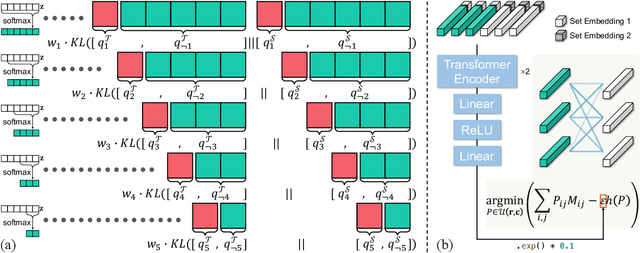
Abstract:Generalizing to novel classes unseen during training is a key challenge of few-shot classification. Recent metric-based methods try to address this by local representations. However, they are unable to take full advantage of them due to (i) improper supervision for pretraining the feature extractor, and (ii) lack of adaptability in the metric for handling various possible compositions of local feature sets. In this work, we unleash the power of local representations in improving novel-class generalization. For the feature extractor, we design a novel pretraining paradigm that learns randomly cropped patches by soft labels. It utilizes the class-level diversity of patches while diminishing the impact of their semantic misalignments to hard labels. To align network output with soft labels, we also propose a UniCon KL-Divergence that emphasizes the equal contribution of each base class in describing "non-base" patches. For the metric, we formulate measuring local feature sets as an entropy-regularized optimal transport problem to introduce the ability to handle sets consisting of homogeneous elements. Furthermore, we design a Modulate Module to endow the metric with the necessary adaptability. Our method achieves new state-of-the-art performance on three popular benchmarks. Moreover, it exceeds state-of-the-art transductive and cross-modal methods in the fine-grained scenario.
Semantic decomposition Network with Contrastive and Structural Constraints for Dental Plaque Segmentation
Aug 12, 2022
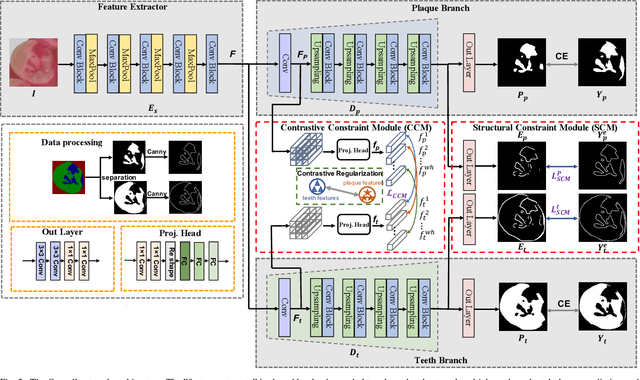
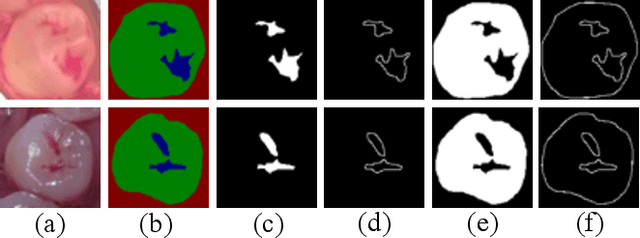
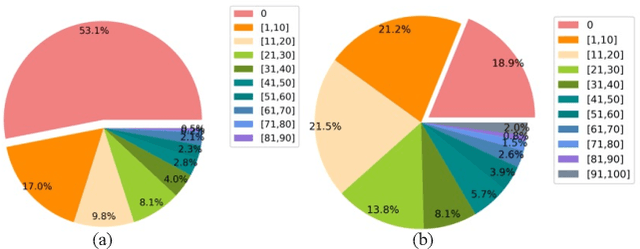
Abstract:Segmenting dental plaque from images of medical reagent staining provides valuable information for diagnosis and the determination of follow-up treatment plan. However, accurate dental plaque segmentation is a challenging task that requires identifying teeth and dental plaque subjected to semantic-blur regions (i.e., confused boundaries in border regions between teeth and dental plaque) and complex variations of instance shapes, which are not fully addressed by existing methods. Therefore, we propose a semantic decomposition network (SDNet) that introduces two single-task branches to separately address the segmentation of teeth and dental plaque and designs additional constraints to learn category-specific features for each branch, thus facilitating the semantic decomposition and improving the performance of dental plaque segmentation. Specifically, SDNet learns two separate segmentation branches for teeth and dental plaque in a divide-and-conquer manner to decouple the entangled relation between them. Each branch that specifies a category tends to yield accurate segmentation. To help these two branches better focus on category-specific features, two constraint modules are further proposed: 1) contrastive constraint module (CCM) to learn discriminative feature representations by maximizing the distance between different category representations, so as to reduce the negative impact of semantic-blur regions on feature extraction; 2) structural constraint module (SCM) to provide complete structural information for dental plaque of various shapes by the supervision of an boundary-aware geometric constraint. Besides, we construct a large-scale open-source Stained Dental Plaque Segmentation dataset (SDPSeg), which provides high-quality annotations for teeth and dental plaque. Experimental results on SDPSeg datasets show SDNet achieves state-of-the-art performance.
Learning Scene Structure Guidance via Cross-Task Knowledge Transfer for Single Depth Super-Resolution
Mar 24, 2021
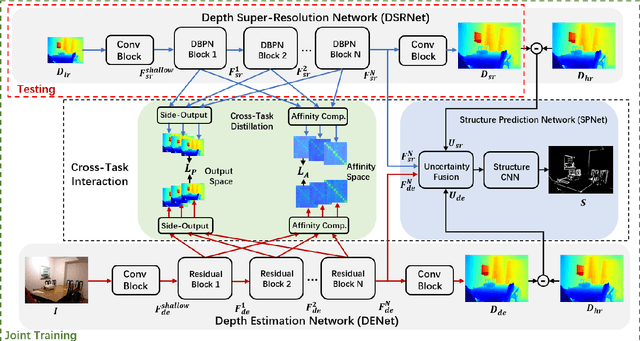
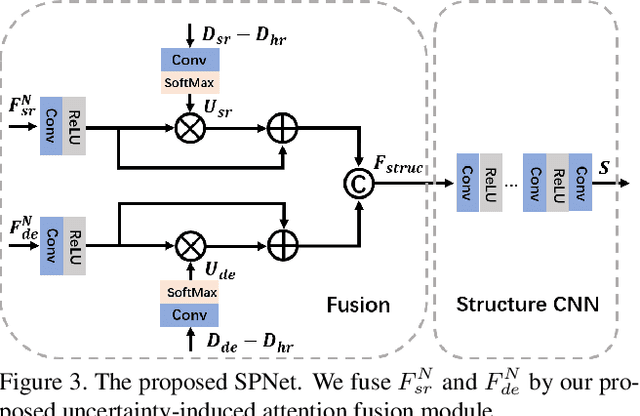

Abstract:Existing color-guided depth super-resolution (DSR) approaches require paired RGB-D data as training samples where the RGB image is used as structural guidance to recover the degraded depth map due to their geometrical similarity. However, the paired data may be limited or expensive to be collected in actual testing environment. Therefore, we explore for the first time to learn the cross-modality knowledge at training stage, where both RGB and depth modalities are available, but test on the target dataset, where only single depth modality exists. Our key idea is to distill the knowledge of scene structural guidance from RGB modality to the single DSR task without changing its network architecture. Specifically, we construct an auxiliary depth estimation (DE) task that takes an RGB image as input to estimate a depth map, and train both DSR task and DE task collaboratively to boost the performance of DSR. Upon this, a cross-task interaction module is proposed to realize bilateral cross task knowledge transfer. First, we design a cross-task distillation scheme that encourages DSR and DE networks to learn from each other in a teacher-student role-exchanging fashion. Then, we advance a structure prediction (SP) task that provides extra structure regularization to help both DSR and DE networks learn more informative structure representations for depth recovery. Extensive experiments demonstrate that our scheme achieves superior performance in comparison with other DSR methods.
Automated Segmentation of Brain Gray Matter Nuclei on Quantitative Susceptibility Mapping Using Deep Convolutional Neural Network
Aug 03, 2020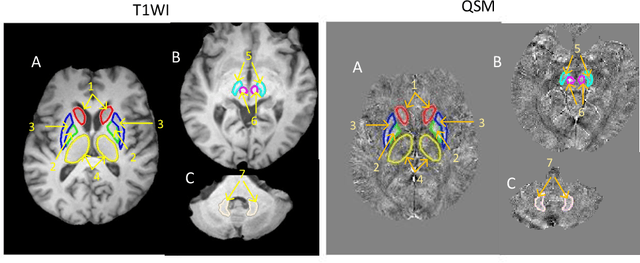
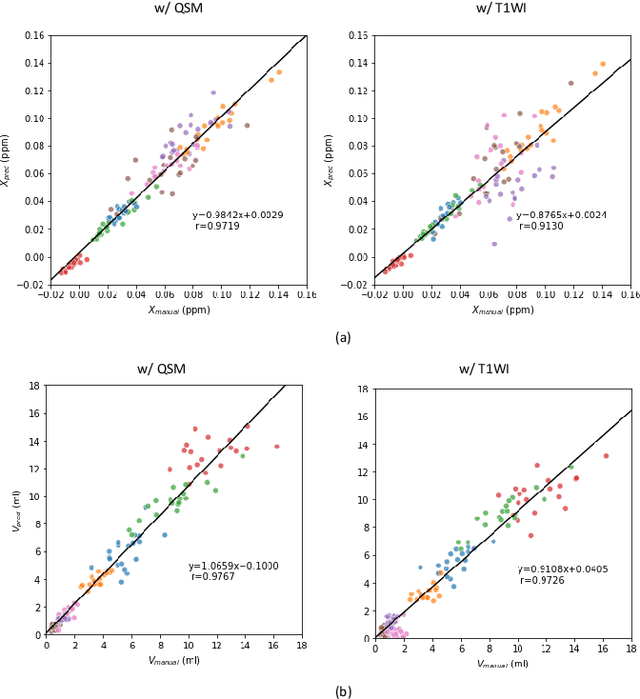

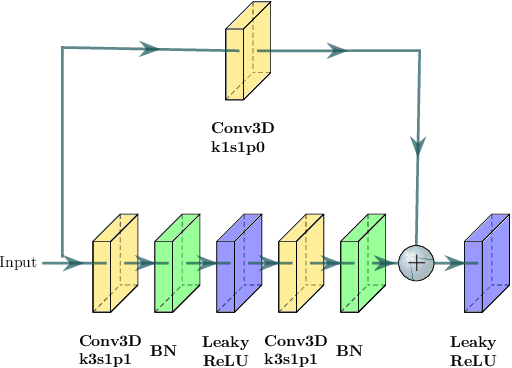
Abstract:Abnormal iron accumulation in the brain subcortical nuclei has been reported to be correlated to various neurodegenerative diseases, which can be measured through the magnetic susceptibility from the quantitative susceptibility mapping (QSM). To quantitively measure the magnetic susceptibility, the nuclei should be accurately segmented, which is a tedious task for clinicians. In this paper, we proposed a double-branch residual-structured U-Net (DB-ResUNet) based on 3D convolutional neural network (CNN) to automatically segment such brain gray matter nuclei. To better tradeoff between segmentation accuracy and the memory efficiency, the proposed DB-ResUNet fed image patches with high resolution and the patches with low resolution but larger field of view into the local and global branches, respectively. Experimental results revealed that by jointly using QSM and T$_\text{1}$ weighted imaging (T$_\text{1}$WI) as inputs, the proposed method was able to achieve better segmentation accuracy over its single-branch counterpart, as well as the conventional atlas-based method and the classical 3D-UNet structure. The susceptibility values and the volumes were also measured, which indicated that the measurements from the proposed DB-ResUNet are able to present high correlation with values from the manually annotated regions of interest.
Boosting Connectivity in Retinal Vessel Segmentation via a Recursive Semantics-Guided Network
Apr 24, 2020
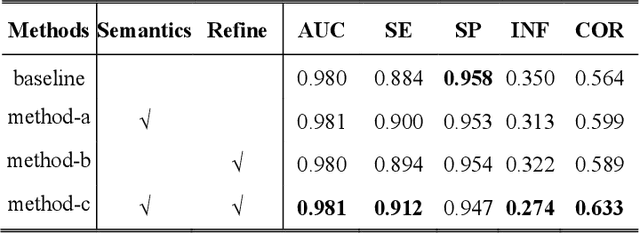
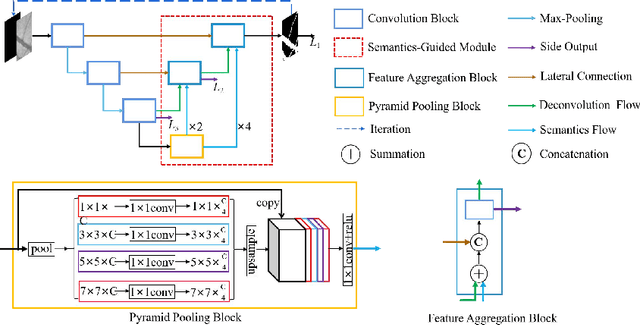

Abstract:Many deep learning based methods have been proposed for retinal vessel segmentation, however few of them focus on the connectivity of segmented vessels, which is quite important for a practical computer-aided diagnosis system on retinal images. In this paper, we propose an efficient network to address this problem. A U-shape network is enhanced by introducing a semantics-guided module, which integrates the enriched semantics information to shallow layers for guiding the network to explore more powerful features. Besides, a recursive refinement iteratively applies the same network over the previous segmentation results for progressively boosting the performance while increasing no extra network parameters. The carefully designed recursive semantics-guided network has been extensively evaluated on several public datasets. Experimental results have shown the efficiency of the proposed method.
 Add to Chrome
Add to Chrome Add to Firefox
Add to Firefox Add to Edge
Add to Edge